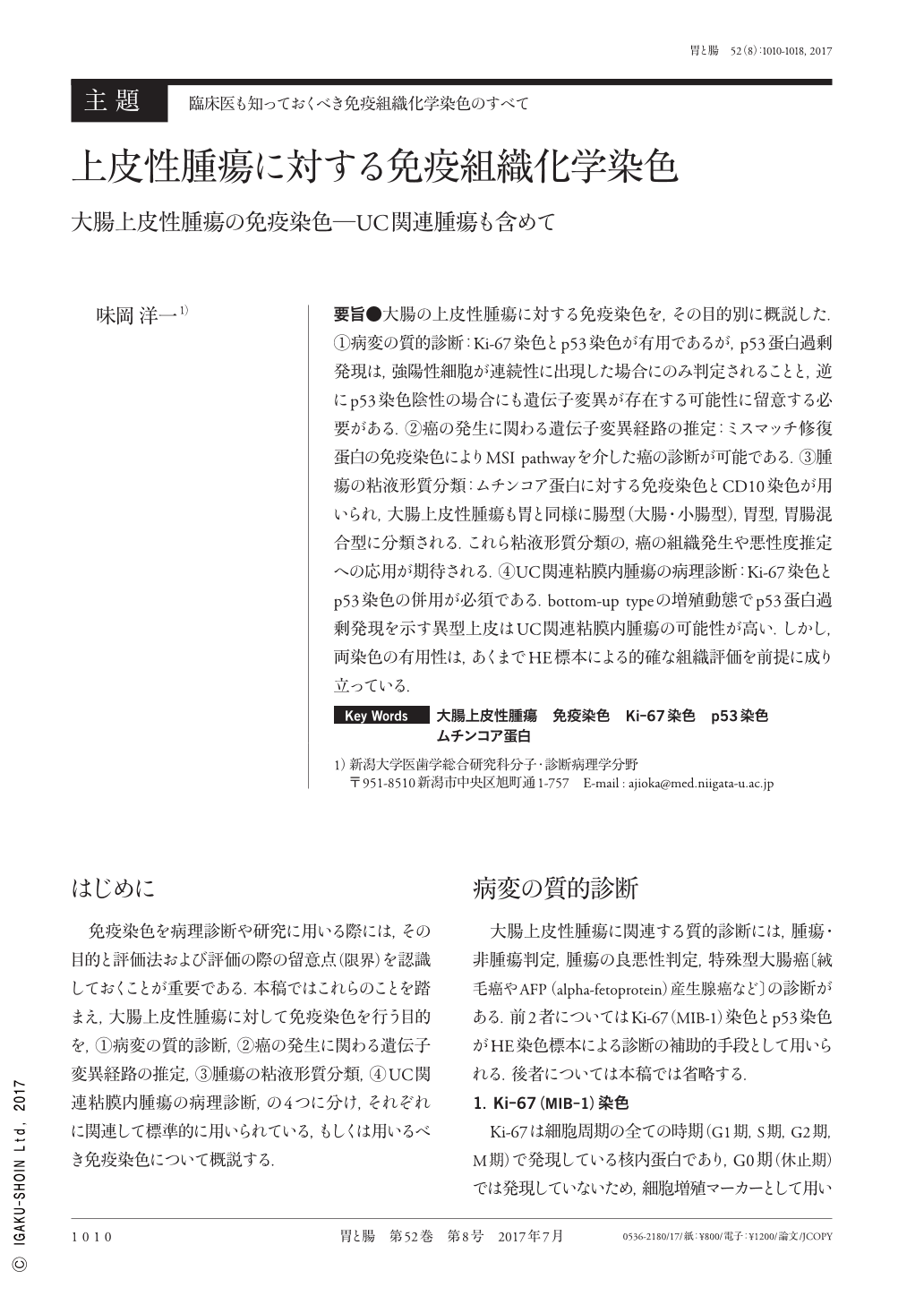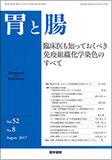Japanese
English
- 有料閲覧
- Abstract 文献概要
- 1ページ目 Look Inside
- 参考文献 Reference
- サイト内被引用 Cited by
要旨●大腸の上皮性腫瘍に対する免疫染色を,その目的別に概説した.①病変の質的診断:Ki-67染色とp53染色が有用であるが,p53蛋白過剰発現は,強陽性細胞が連続性に出現した場合にのみ判定されることと,逆にp53染色陰性の場合にも遺伝子変異が存在する可能性に留意する必要がある.②癌の発生に関わる遺伝子変異経路の推定:ミスマッチ修復蛋白の免疫染色によりMSI pathwayを介した癌の診断が可能である.③腫瘍の粘液形質分類:ムチンコア蛋白に対する免疫染色とCD10染色が用いられ,大腸上皮性腫瘍も胃と同様に腸型(大腸・小腸型),胃型,胃腸混合型に分類される.これら粘液形質分類の,癌の組織発生や悪性度推定への応用が期待される.④UC関連粘膜内腫瘍の病理診断:Ki-67染色とp53染色の併用が必須である.bottom-up typeの増殖動態でp53蛋白過剰発現を示す異型上皮はUC関連粘膜内腫瘍の可能性が高い.しかし,両染色の有用性は,あくまでHE標本による的確な組織評価を前提に成り立っている.
Standard immunostains used for detecting colorectal epithelial neoplasia were reviewed according to their purpose. 1)Pathological diagnosis: Ki-67 and p53 stains have a diagnostic significance. However, notably, the overexpression of p53 protein can show a strong and continuous staining pattern, whereas p53 genetic alterations can show negative staining. 2)Estimation of cancer genetic pathway: Immunostains for mismatch repair proteins may prove the development of colorectal carcinoma in the MSI(microsatellite instability)pathway. 3)Mucin phenotype classification: Based on the combination of immunostains for mucin core proteins and CD10, colorectal epithelial neoplasia can be classified into intestinal(large and small intestinal), gastric, and gastrointestinal types. This classification can be used in the estimation of cancer histogenesis and malignant potential. 4)Pathological diagnosis of UC-related intramucosal neoplasia: Ki-67 and p53 stains are necessary for accurate diagnosis. Atypical epithelium with bottom-up-type cell kinetics associated with the overexpression of p53 protein is highly speculated to indicate UC-associated neoplasia. However, the usefulness of these two stains is based on a reliable histological evaluation using the HE stain.

Copyright © 2017, Igaku-Shoin Ltd. All rights reserved.


